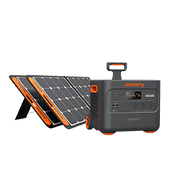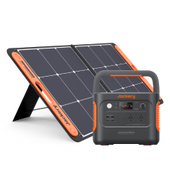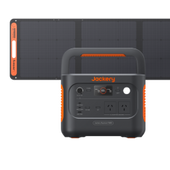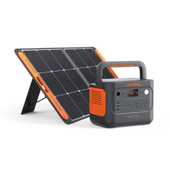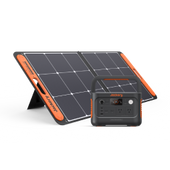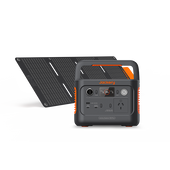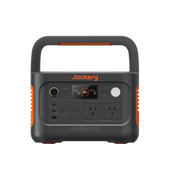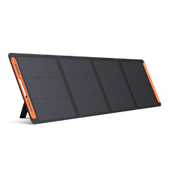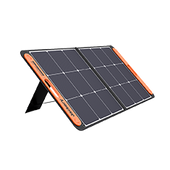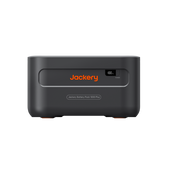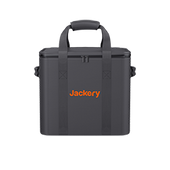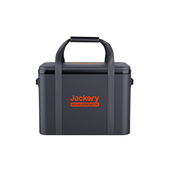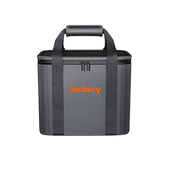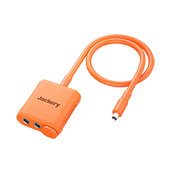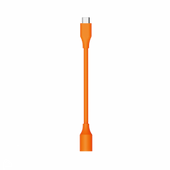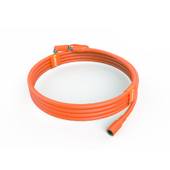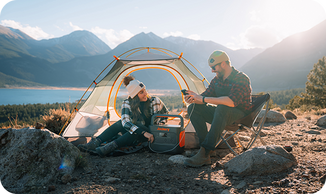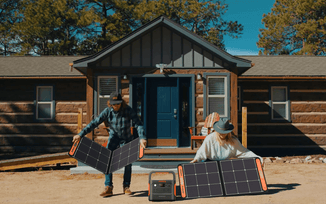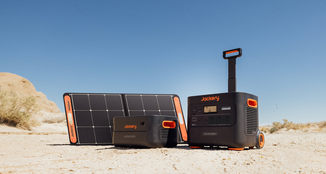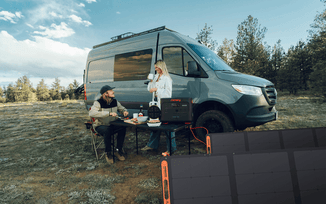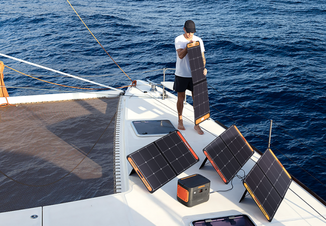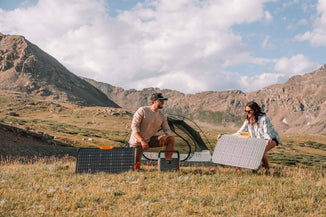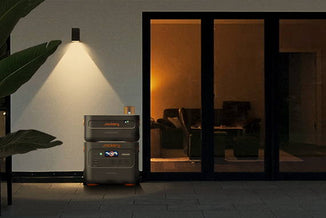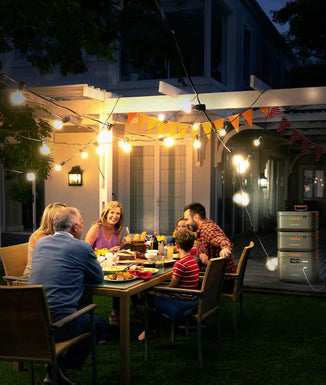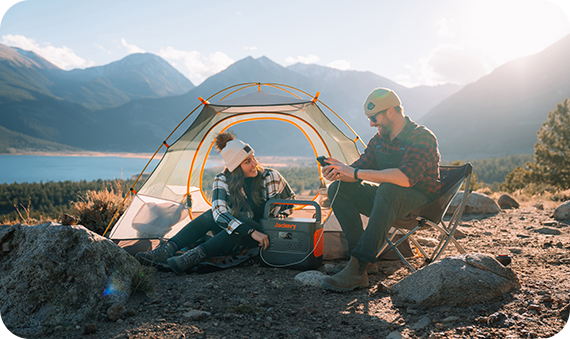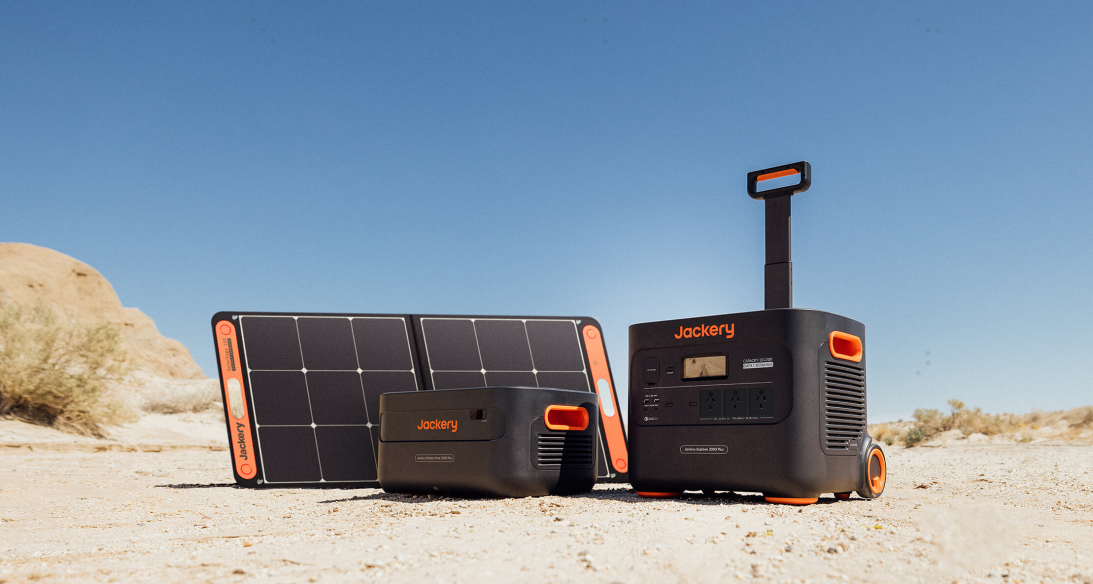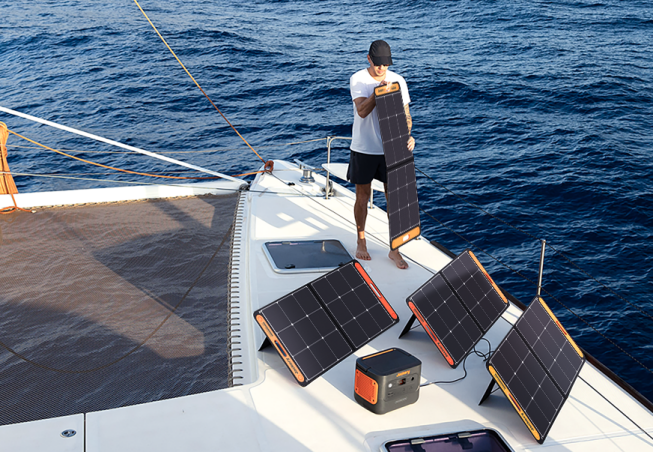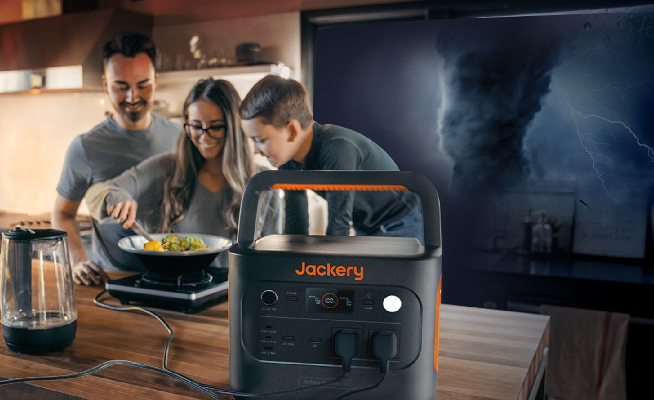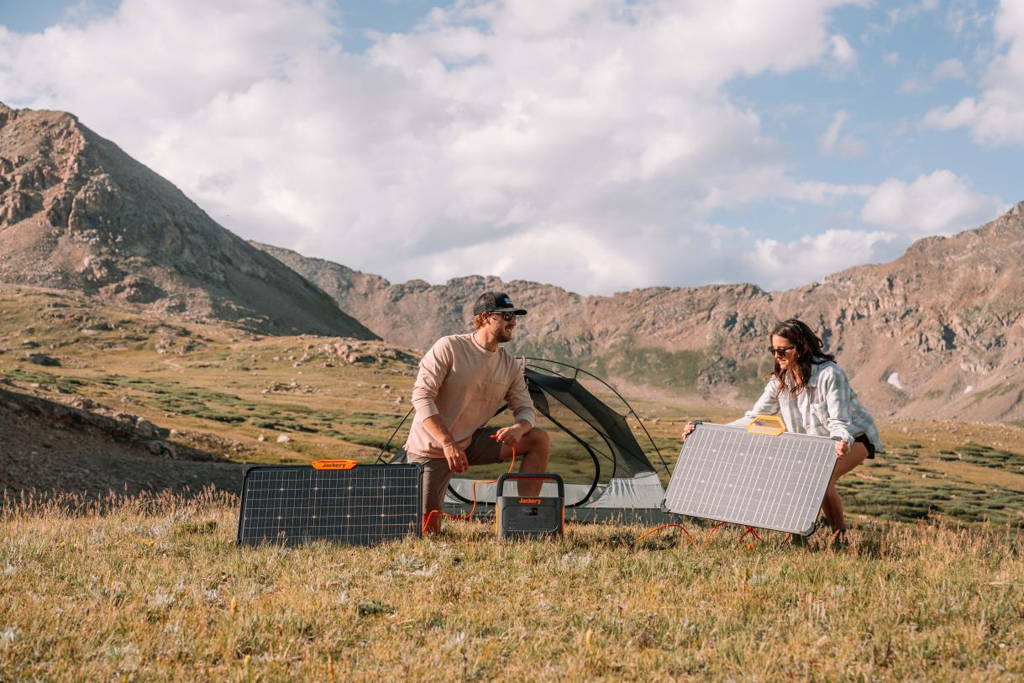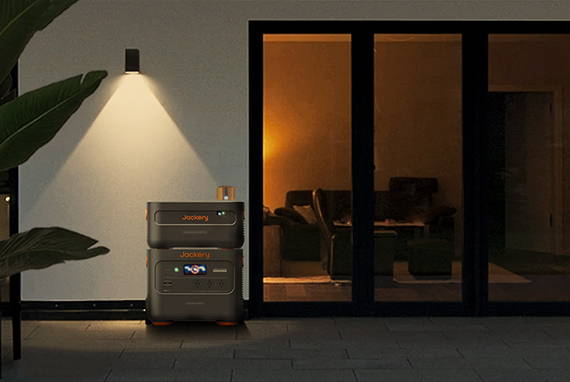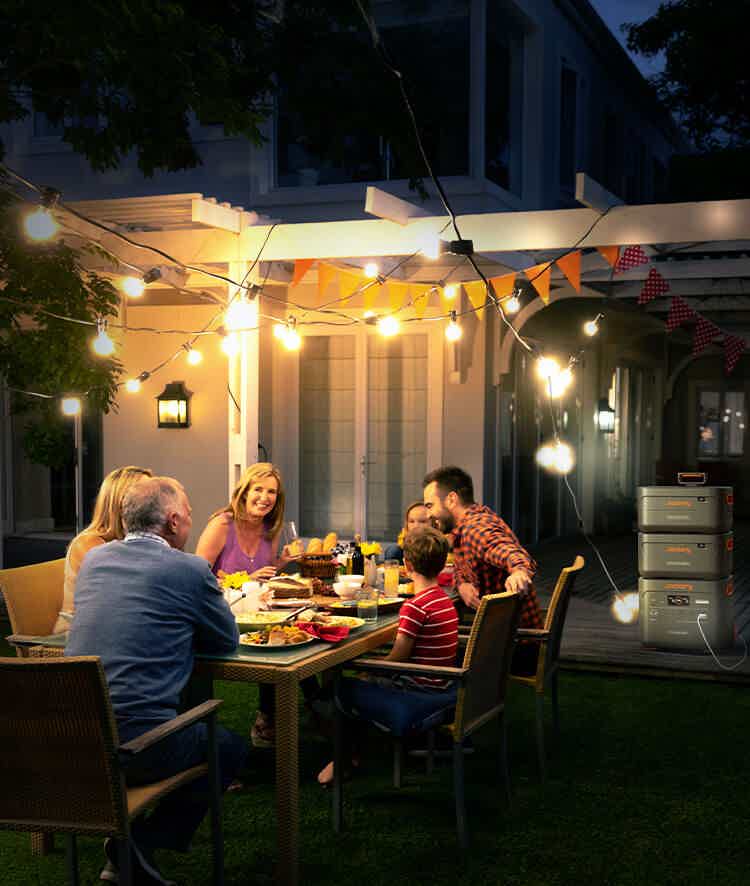|
Key Takeaways: |
|
- Tasmania is a top destination for motorbike enthusiasts worldwide. - Australia's island state features well-kept roads, fantastic infrastructure, and low traffic, and is ideal for thrilling rides. - Tasmania offers numerous excellent routes. - Tasmania's temperate climate allows enjoyable bike tours throughout the year without extreme heat or cold. - Choose gear that satisfies safety standards. - We recommend Jackery Solar Generator 600 Plus to charge your electronics and devices in your motorcycle tours. |
Why Is Tasmania Good for Motorcycle Tours?
Tasmania is a motorbike traveller's paradise and a must-see for any Australian biker. Tasmania was separated from Australia's mainland 10,000 years ago and is now 150 miles south in the Southern Ocean. Tasmania has some excellent motorcycling roads and breathtaking landscapes. Snow-capped mountains, temperate rainforests, stunning waterfalls, interesting coastlines, and specimens of rare flora and wildlife found nowhere else on the planet.
You can fly in or ferry over the Bass Strait to reach there. Australia's least populous state, with more than 40% of the population living in Hobart's capital, is also the most mountainous, with over 450 peaks. So, the roads are long, open, and deserted, ideal for bicycling.
It's a rite of passage for any Australian motorcyclist, and everyone we met on the mainland insisted we go. And they were not wrong. It's wild, lonely, and raw, with the clearest air on the route. Its backcountry is rocky, and riding through it is like exploring a long-forgotten region.
Australia's island state features well-maintained roads, excellent infrastructure, and little traffic, and it is ideal for an exciting ride. And here's the best part about a Tasmanian ride: it's all squished. It's a simple ride to the beach from the highlands, crossing rivers and passing through wildlife-rich meadows. It's as if some motorcycling God gathered Australia's top attractions and concentrated them into one exhilarating destination.
It was left to its own devices, becoming wild, unpredictable, and teeming with bizarre species. It's raw, rough, secluded, and full of foggy mountains, dirt paths, and breathtaking roads—cycling heaven.
The Best Motorcycle Routes in Tasmania
Tasmania has so many fantastic routes that it deserves its guidebook. Check out the specialized guide below for our favourite riding roads and the best routes.

Tasmania's East Coast
A scenic motorcycle ride with breathtaking coastal views and attractions.
Motorcycle enthusiasts from all over the world visit Tasmania to take advantage of the well-known east coast ride. This motorbike journey is easily accessible by flying into Hobart, Tasmania's largest city, and then riding north. The east coast is covered in vineyards and has beautiful ocean views.
The Lake Leake Highway leads to the seaside hamlet of Freycinet, where you can stay overnight at Wineglass Bay. The route continues across the thrillingly small Elephant Pass, where you can converse with other Pancake House riders. The road then descends to St. Marys Pass, which leads to the ocean.
Alternatively, you can take the Tasman Highway through Weldborough and stop for a pint at the famed Pub in a Paddock. This route follows the coast, providing spectacular views of the ocean beyond. You can continue it up to Tasmania's north coast, with attractive small villages like Bridport.
The North Coast
A breathtaking ride through quirky towns and fresh sea air.
Devonport is one of Tasmania's largest cities. This port town is the departure point for Spirit of Tasmania boats to the mainland, making it an ideal starting place for exploring the northern coast. Head west on Highway 1 from Devonport for the breathtaking trip down the Bass Highway.
This path is ideal for a motorcycle tour. It has front-row seats to wind blowing from the Bass Strait on the Roaring Forties. This Southern Hemisphere weather pattern brings the freshest air on Earth to Tasmania's north shore, so flip up your visor and enjoy a chest full of revitalizing oxygen.
The journey will take you through some truly unusual towns, like Penguin and Burnie. The Penguin is home to the world's smallest penguins. Stop here, grab a seat on the beach at twilight, and watch these tiny blue creatures return from a day of hunting on the Bass Strait in formations known as rafts. You will enjoy seeing them fight against tiny, small waves as they return to their sandy subterranean homes for the night.
Burnie, a former harbour town near Penguin, has become a hub for artists and craftspeople. Park your bike and visit one of the many stores in town, or stay a little longer to learn a craft from one of the town's artisans.
Rocky Cape National Park is located further up the road. Wildflowers bloom throughout the year on this magnificent protected property. In the background, you can see The Nut, a volcanic plug in the little peninsula town of Stanley. Take your time crossing this rugged terrain while sampling some of the area's fresh vegetables, cheese, and meat for an unforgettable biking adventure.
The Rugged West Coast
It is for the daring rider seeking untamed beauty.
The west coast of Tasmania is an authentic Wild West. The topography is exceedingly rugged, which makes for breathtaking beauty, but it comes at a cost: there is less infrastructure, and roads are not as well maintained as those on the east, south, and north coasts. However, the daring biker will be rewarded with sceneries that can only be found on Earth.
The Lyell Highway out of Hobart, via Derwent Bridge, serves as your western gateway. Allow extra time for a brief detour through Franklin-Gordon Wild Rivers National Park via the winding Gordon River Road. This breathtaking drive will take you through some of Australia's wildest landscapes. Stop at one of the many short nature hikes to see waterfalls, take in towering views, or enjoy a picnic. Then, continue through the quaint town of Derwent Bridge before arriving at Queenstown.
The highway makes an astounding number of curves as it descends into this historic mining town. From above, you can see the entire landscape formed by Tasmania's mining boom in the 1800s. Mining and copper smelting have depleted the hills and mountains surrounding Queenstown of forest and natural soils, exposing a vibrant artificial moonscape. This unnatural calamity has resulted in a unique environment that is a stunning reminder of man's destructive nature.
Tasmania's Southlands
A combination of history, nature, and scenic beauty.
The land forks south of Hobart. The Huon River Valley lies directly south with its rolling hills and stunning vistas of the D'Entrecasteaux Channel. To the southeast, explore quaint shack villages like Doo Town before reaching the picturesque Eaglehawk Neck on your route to the historic Tasman Peninsula and Port Arthur.
Driving south from Hobart is an excellent way to view Tasmania's rocky beaches, and everything is easily accessible as a day excursion. The road comes to a stop just over an hour from Hobart.
The Huon River Valley is covered in orchards, and you can stop to harvest your fruit.
But make sure to stop in the artsy small town of Kettering, where you can take a vehicle ferry to Bruny Island. The route on the island is lovely, and you should head south to the South Bruny National Park. You can stand atop towering dolerite coastal cliffs and look for migratory Southern Right Whales.
The trip to the Tasman Peninsula from Hobart's southeast is equally breathtaking. Impressive geological marvels await you, including the Tasman Arch, Tessellated Pavement, and Devil's Kitchen. In Eaglehawk Neck, you will cross a 100-metre-wide piece of sandy ground that connects the Tasman Peninsula to mainland Tasmania. From there, you can explore the Tasman Peninsula's roads on your journey to the historic Port Arthur, where prisoners were held in the 1800s.
When Is the Best Time for Motorcycle Tours in Tasmania?
Fortunately, Tasmania has a very temperate climate, so it doesn't get too hot or cold, so you can go on a liberating bike tour anytime. While Tasmania has a highly temperate climate with temperatures, you may encounter rain. When you arrive on the island, check the forecasts for the east and west sides. You should pack some wet and cold weather clothes. In Tasmania, you can experience four seasons in one day, so pack accordingly, regardless of when you visit.
So, November through February are the best months to go on a motorcycle tour in Tasmania. Remember that December and January are popular months, so campgrounds may be busy. The shoulder seasons are also an excellent idea. We travelled in March and had great weather; the campgrounds were nearly empty.
Of course, it makes for excellent travelling, but remember that the riding season in 'Tassie' is minimal due to cold and wet weather outside the summer months. It's a long way south; therefore, Antarctic weather systems can sometimes make the climate unpredictable.
Typical midsummer temperatures range from 17C to 23C. Expect temperatures ranging from 3C to 18C from early autumn to late spring. If you go motorcycle camping, it'll be cold enough to require a good sleeping bag!
Motorcycle Touring Gear List
Your motorcycle riding gear's purpose is to protect you. Unfortunately, people typically consider it until they need it, but you invest in your safety, so choose wisely.
It's critical to choose gear that satisfies standard safety ratings. Ensure that your helmet meets the safety ratings for the nation in which you are purchasing it. Your boots should protect your ankles and shins, while your jacket and pants should cover your back, knees, and elbows. Always wear your gear and ride safely.
Now, we'll go into the specifics of motorcycle riding clothing. This area is divided into helmets, jackets and trousers, boots, gloves, and accessories.

A. Motorcycle Helmets
Above all, your helmet should be completely comfy. When purchasing a new device for a vacation, it should be tested for at least one month before departure. Reading helmet evaluations can be difficult because what works for one person may not work for your head shape, so try on as many as possible.
Adventure bike helmets are designed as a cross between dirt bike and street bike lids. They have larger visor apertures, better ventilation, removable peaks, and can usually accommodate goggles and visors.
B. Motorcycle Boots
Consider your footwear wisely. If you're going serious off-road, choose either adventure boots or authentic ones. However, walking and hiking are uncomfortable, so they should bring extra footwear.
Have a look at these instances. The Richa boots are more road-focused, with less shin protection, less hardwearing material, no buckles to secure your foot, and a softer sole. These are ideal for touring, particularly road cycling.
C. Motorcycle Suits
Your adventure-riding clothing is crucial. Your jacket and pants will be worn all day, every
day. Therefore, they must perform flawlessly.
It must protect your body from crashes and the elements, keep you warm, calm, and dry, contain your belongings, be comfortable in all weather conditions, and survive severe treatment from constant riding and travel. So, it's critical to select the appropriate outfit for the task.
Motorcycle riding gear and adventure bike clothes are available in three options:
1. Waterproof outer shell suits have a single, totally waterproof outer layer.
2. Suits with waterproof liners - the liner is often worn below the outer suit and is usually removable.
3. Suits without waterproofing can be mesh summer suits or suits with a removable lining that has been removed.
D. Motorcycle Gloves
Carry at least two sets of gloves, one for hot and one for cold conditions. It's a good idea to bring at least two gloves, one for cold and one for hot weather. Pick a pair that falls on the far end of both categories unless you want to carry a third middle-weight glove.
For chilly weather, choose a winter glove with a plush thermal lining and a Gore-Tex membrane; it will keep you warm and reduce the likelihood of getting wet. Choose a lightweight, breathable, and flexible glove with no waterproofing for summer riding.
E. Extra Kit
Don't forget to include a neck buff. Neck buffs are a versatile and valuable piece of gear. They keep the wind chill off your neck and chest in the winter and protect your neck from sunburn in the summer. They also serve as sleeping caps on cold evenings in the tent.
Hydration bladder packs are ideal for adventure cyclists who enjoy off-roading. Stopping every five minutes to open a bottle of water is inconvenient, so you'll probably skip it, which could lead to dehydration.
Wearing earplugs may benefit you in the long run. Throwover waterproofs are ideal if you don't have a lined kit. There are two options: a whole suit zip-up (connected jacket and trousers) or a separate top and bottom.
In today's world, we rely heavily on our electronic devices. A portable power solution, like Jackery Solar Generator or Portable Power Station, ensures you can keep your smartphone charged for navigation, communication, and capturing memories.

F. Renting a Motorcycle or Taking a Tour In Tasmania
Tasmania is an excellent location for renting a motorcycle or participating in an organized motorcycle tour, and numerous excellent firms are available.
Suppose you are from Australia, or even from outside, and wish to ride there. In that case, renting a motorcycle in Tasmania can save the inconvenience of taking the boat or sending your bike to Australia. It relieves stress. Of course, renting a bike is more expensive than owning one, but consider the ferry prices and the two days spent travelling.
Jackery Solar Generator 600 Plus for Motorcycle Tours
The Jackery Solar Generator 600 Plus could be a beneficial choice for motorcycle tours in Tasmania for several compelling reasons, considering the island's unique environment and the needs of motorcycle travellers:

Sufficient Power for Essentials: With a 632Wh capacity and an 800W AC output (1600W peak), the Explorer 600 Plus provides ample power to keep your essential devices running throughout your Tasmanian adventure. This includes charging smartphones for navigation and communication, powering GPS units to explore winding roads, keeping cameras charged to capture stunning landscapes, and even running small camping appliances like lights or a mini cooler for short periods.
Portable Yet Powerful: Weighing around 16.1 lbs (7.3 kg), the Explorer 600 Plus strikes a good balance between power capacity and portability. While weight is always a consideration on a motorcycle, this unit offers a significant power reserve without being excessively bulky, making it manageable to pack within your luggage system.
Reliable LiFePO4 Battery: Using a LiFePO4 battery chemistry is a significant advantage. These batteries offer a longer lifespan (around 4000 cycles to 70%+ capacity), enhanced safety features, and better temperature stability compared to traditional lithium-ion batteries. This is crucial for the varying weather conditions you might encounter in Tasmania.
Solar Charging Capability: When bundled with Jackery SolarSaga 100W solar panels, the Solar Generator 600 Plus allows you to recharge using solar power. This is particularly beneficial in Tasmania's often remote and naturally beautiful areas, giving you a degree of energy independence away from traditional power outlets. While a full solar recharge can take around 8.5 hours with one 100W panel (depending on sunlight), it allows you to top up the battery during stops and ensure you have power for the evenings or the next day's ride.
|
Jackery Solar Generator 600 Plus Working Hours |
|
|
Camping Light (3W) |
54H |
|
Projector (100W) |
5H |
|
Coffee Maker (550W) |
1H |
|
Mobile Phone (29W) |
27 Times |
|
Camera (8.4W) |
27 Times |
(*The working hours are only for reference; the actual working hours depend on your usage.)
Precautions & Safety Measures for Tasmania Motorcycle Tours
Tasmania has excellent infrastructure and maintained roads. However, there are a few things to bear in mind.

Tip 1: Safety For Motorcycle Riders In Tasmania
It is not nearly as extensive as the Australian outback, and the threats are not as severe, but there are large areas of Tasmania that humans have never touched. It is still a wild and unpredictable island, with some incredibly remote roads and locations where you may not see another person for hours or even days, so exercise caution.
An emergency GPS gadget is usually a good idea if you need assistance. Several stretches of the road indicate that there is no phone signal. So, especially if you're travelling alone, this device could save your life.
Tip 2: Emergency Satellite Devices For Motorbike Excursions
An emergency satellite GPS device is essential for motorbike riders in distant and far-flung areas. You can rapidly find yourself alone, isolated, and cut off from others, which means you won't be able to get help if you need it. If you crash your motorcycle, it could be hours, or even days, before aid arrives. Your cell phone may not have a signal, and you may be unable to contact anyone, which is why emergency satellite communicators can be the difference between receiving rapid medical attention and perhaps life and death.
These emergency devices are little gadgets with SOS buttons that, when pressed, send signals via satellite to an emergency response centre. The centre will then get your coordinates (and message, if you submitted one) and quickly contact and dispatch emergency medical assistance.
If you're riding a motorcycle and travelling somewhere remote, please consider bringing one. Please read our complete guide and learn more about what they are, the various types available, and how they function.
Tip 3: Weather Conditions and Motorcycle Safety
You may encounter extreme weather conditions when riding your motorcycle. Extreme heat and cold can be dangerous, so you must prepare accordingly.
Wearing the appropriate riding gear will make a significant difference. For intense heat, you'll need mesh or extremely lightweight riding gear. If you're riding in temps above 40 degrees Celsius, consider wetting your t-shirt underneath and zipping up your garments to create a microclimate. Stop frequently in the shade, be hydrated, and be wary of heatstroke.
Winter biking requires careful clothing selection, including thermal layering and heated gear. Remember that staying warm is easier than getting warm, so consider heated gear and be aware of ice on the road.
Tip 4: Riding Conditions for Motorcycle Tours in Tasmania
You may ride around Tasmania on solely paved roads and avoid gravel. The roads are in excellent shape, and there are several magnificent tarmac roads with plenty of twisties around the island.
Tasmania is full of excellent off-road trails that go through dense forests and up and over foggy mountains. The riding isn't technical unless you specifically look for it. You can ride beginner to advanced off-road tracks depending on your skill level.
Part of the trip is pushing yourself and cycling unfamiliar, challenging roads and terrain. However, this does not mean you should be much beyond your comfort zone, especially when riding alone. A motorbike excursion is not a race. It's all about having fun and getting there safely.
Be honest about your ability. If you're riding in a group with more experienced cyclists, don't feel compelled to keep up or follow the pack. Go at your own pace and do what you are comfortable with.
Study ahead if you're unsure about the road conditions or your ability to handle them. Look for information online and ask locals and other travellers. Make an informed decision before you arrive and are forced to push through anything potentially dangerous.
FAQs about Tasmania Motorcycle Tours
The following are the frequently asked questions about motorcycle tours in Tasmania.
1. What are the best rides in Tasmania?
Tasmania's East Coast: Lake Leake Highway, Tasman Highway, and Elephant Pass.
The North Coast - Highway 1 and Bass Highway.
The rugged West Coast - Lyell Highway and Gordon River Road.
Tasmania's Southlands: Huon River Valley, Tasman Peninsula.
2. How long does riding a motorcycle across Tasmania take?
Cycle tourists typically take a three-week journey to complete the whole circuit of Tasmania, known as the Giro Tasmania.
3. How to rent a motorcycle in Tasmania?
Motorcycles are available for rent in all three major Tasmanian cities: Devonport, Launceston, and Hobart. To rent a bike, you must have a motorcycle endorsement on your driver's license and be at least 25 years old. Motorcycle licenses from other countries are commonly accepted, but you must provide your passport if you are not an Australian citizen.
4. What gear do you need for your motorcycle?
Helmet: DOT, ECE, or SNELL-approved full-face helmet (maximum age 5 years old; check manufacturing date).
Gloves: Full gauntlet gloves with wrist coverage. Over-the-ankle riding boots.
Riding Suit: One- or two-piece leather suit (if two-piece, zip together).
Final Thoughts
Tasmania offers a voyage across varied landscapes that will change your perspective. From the West Coast's rugged charm to the East Coast's tranquil allure and the North Coast's exhilarating promise, each motorcycle tour through Tasmania provides an opportunity to experience the island's distinct essence. Whether you prefer a leisurely ride or an off-road adventure, you'll discover the island's charm and make unforgettable memories.

